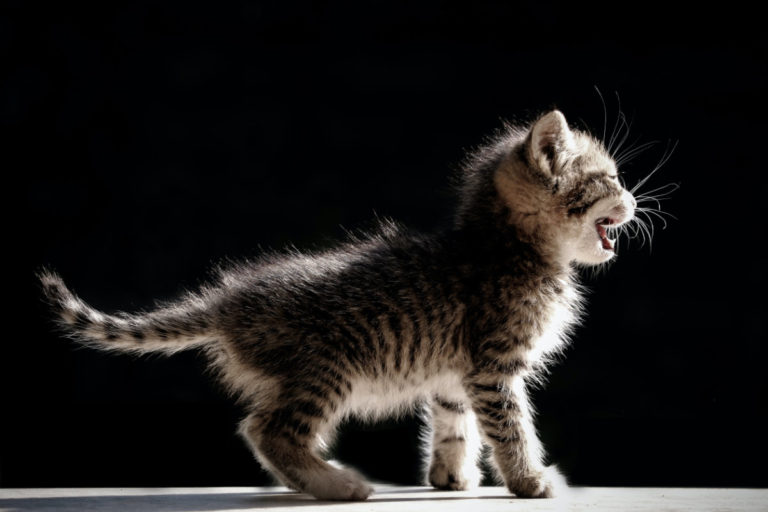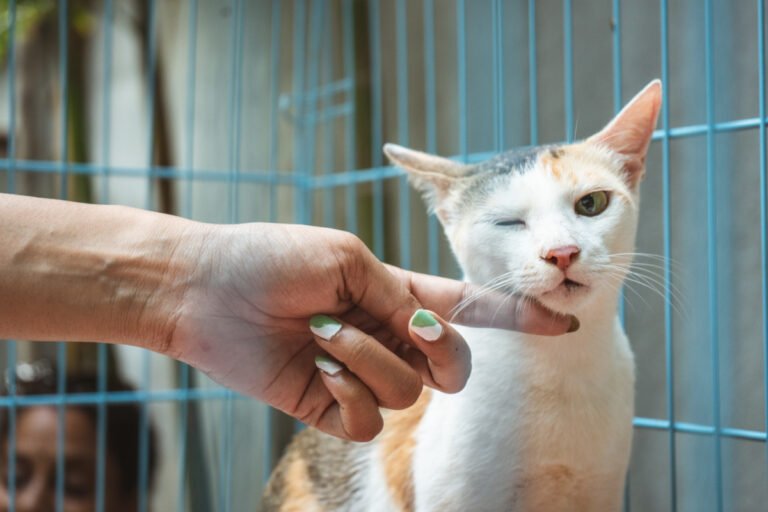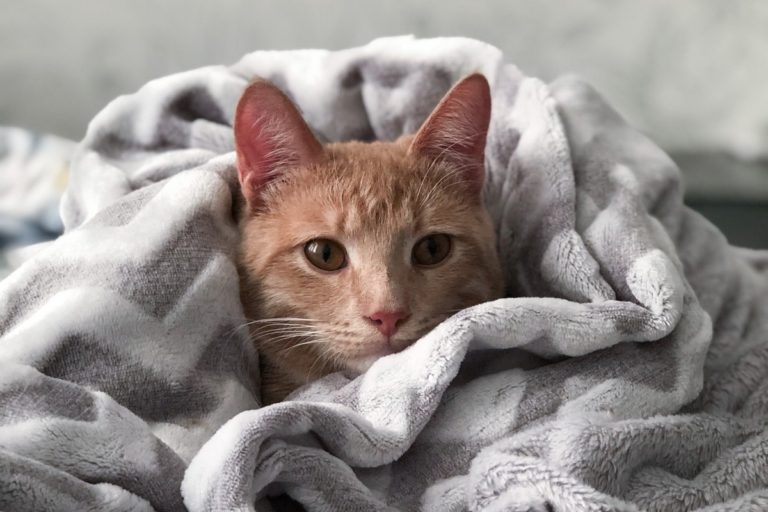The more cats you have, the more litter boxes you need. But how do you find the right balance between litter boxes and living space when you have 6 cats? Read our guide to find out.
DISCLAIMER: This post may contain affiliate links. If you click one of these links and decide to make a purchase, we may receive a small commission. This comes at no extra cost to you and helps to keep the site alive and up to date. If you want more information, please review our Privacy Policy. Thank you for your support!
How Many Litter Boxes For 6 Cats?
Short answer: 7. In general, the rule is to have as many litter boxes as there are floors in your house, or the number of cats you have plus one. Whichever is the highest, is the number of litter boxes you should get. So, assuming you don’t occupy a 10-story warehouse or live at Downton Abbey, for 6 cats you need 7 litter boxes.
The only exception to this rule is when you live in a very small apartment. In that case you should try to place as many litter boxes as you can comfortably spread out over your living space, without turning it into Cat Pee Central. You have to live there too, after all.
What Type Of Litter Box Should I Get?
When you have multiple cats, the question isn’t what type, but what types of litter boxes you should get. Every cat has their own preferences and these may even change depending on the time of day. So your best bet is to add some variation to your litter box choices. Let’s go over the basic options you need to consider for a household with 6 cats.
Litter Pan Size And Height
If you have multiple cats, chances are they are not all the same size. You might have a momma cat and some kittens running around, or an old big boy that rules the nest. Your litter boxes should cater to all of them.
Cats are most comfortable in a litter box that is about 1.5 times their size. This gives them plenty of room to turn around and check out all corners of the box, while not being so big that a predator might get in. Cats are big on that.
Of course, that doesn’t mean you should put out tiny litter boxes for your tiny kittens. (Although that would be super cute!) They should actually be able to get into the litter box with their siblings and their mother to help them learn what this litter business is all about.
You might also have one or two cats that spray. All cats can do this, but not all of them do. If you have male cats, your chances of being confronted with this nasty cat behavior are exponentially higher. And so should your litter boxes be! A high edge helps to catch all the urine and leave your walls clean.
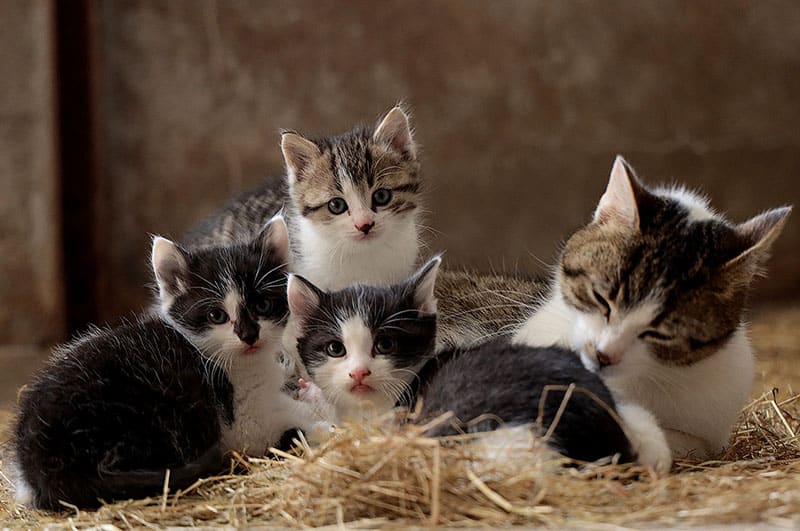
Covered Versus Uncovered Litter Boxes
Litter boxes come in both covered and uncovered varieties. Covered litter boxes may have a detachable hood or a pan that slides out. The hood itself may be square and roomy, or curved and more encroaching on your kitty’s space.
Covered litter boxes are generally better at limiting the essence of cat urine traveling around your house, which is a major selling point for people with a multi-cat household.
Still, it is worth considering your cats’ point of view on this too. All that odor that you don’t smell is likely getting trapped under that hood and punishing your cats whenever they use the litter box.
On top of that, some cats just don’t like going on, or into, a hooded litter box. It might be too claustrophobic for them, especially if they are a bit bigger. Or they don’t want to crawl into a space ready to be bullied by one of your more dominant cats. More cats does mean more opportunity for conflict.
High Versus Low Entry Litter Boxes
You should also consider the age of your cats. If you have a few mature or senior cats walking around that aren’t the lean machines they once were. Many older cats develop arthritis, which gives them sore joints and makes them less mobile.
If the litter box is too high for them to get in without pain, they likely won’t use it. Similarly, kittens are only so big and can’t jump over a high litter box edge yet. Place a few litter boxes that have a low front entry to accommodate them.
On the other hand, a low entry at the front of your litter box means that you can’t put too much litter in there, or it will spill out. You don’t want all of your litter boxes to have this feature, because your house will be taken over by cat litter.
High litter boxes, or even top entry litter boxes, are perfect for young and adult cats and will help to limit the tracking of cat litter.
Sifting And Self-Cleaning Litter Boxes
Another aspect that is definitely worth considering if you have 6 cats is how you are going to clean all those litter boxes.
If you don’t want picking up cat poop to take up all of your time, I suggest putting a few self-cleaning, or even sifting litter boxes in there. Self-cleaning litter boxes automatically remove feces and soiled litter from the box without you interfering, sometimes for weeks! Live the dream! 😉
Sifting litter boxes do require some manual work, however. But they make it ten times easier. The easiest-to-use sifting litter boxes have holes in the bottom and a tray underneath that catches the soiled litter. These litter boxes are perfect for use in combination with a non-clumping pellet litter.
Other sifting litter boxes come with a rake-type scoop that is as wide as the pan, or they have a double bottom that you can use to manually sift through the litter. Either way, it saves you a lot of digging around with your litter scoop.
What’s The Best Place For A Litter Box?
Now that you have all of your litter boxes, where should you place them? I recommend spreading them around your house at equal distances as much as you can. Of course, your house should remain inhabitable to its human occupants too, so I wouldn’t put one right where you sit if you don’t have to.
That said, if you have one or more cats that like to mark or tend to have accidents in specific spots, place litter boxes in those spots first, and work out from there. Once you get them to a point where they are using the box instead of the wall, your sofa, the TV cabinet, or whatever they like to target, you can start to move the litter boxes to a more convenient place.
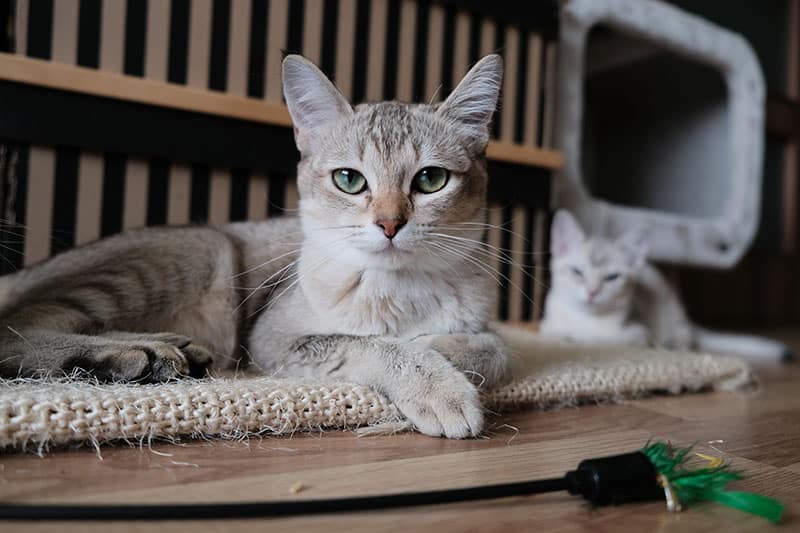
How To Train Your Cats To Use The Right Litter Box
After carefully selecting litter boxes to meet each of your cats’ needs, you of course want them to use the box you specifically picked out for them. How do you do that?
Well, unfortunately, you’re going to have to leave this up to chance, for the most part. If a particular litter box caters to your cats physical needs and another one does not, your cat is already very likely to pick the correct one.
You can steer the process a bit by moving some shit around. Literally! If your cat poops or pees in a litter box that isn’t really meant for her, scoop up the deposit and move it to the box you want her to use instead.
Cats are highly focused on scent. They own what smells like them. That’s also why they keep rubbing up against you. They are trying to mix their scent with yours to say: “This MY human!”
A poop in a box is a path to ownership. The more the litter box starts smelling like her, the more she will see it as her litter box and the place to drop her stinkies.
More Tips On Litter Boxes For Multiple Cats
Cat Litter
As much as the type of litter box matters, so does the type of cat litter you choose. Again, we could be speaking about types here. Clumping cat litter is convenient for us cat owners, but our cats don’t always agree. Long-haired cats may be annoyed by the litter sticking to their paws and fur. Or they may just think it’s too dusty.
Declawed cats often don’t appreciate larger pellets, like the biodegradable wood pellets that are sold. It hurts their paws to step on it and they might very well choose to poop on the floor instead.
Corn and grass litters are great for the environment, but some cats are allergic to them. You probably won’t notice this right away, because your cat doesn’t hang out and chill in the litter box (I hope). But over time the allergens will build up and start to bother her.
If you see your cat scratching more than usual and biting at her coat, especially around her face and paws, or you hear her coughing a lot, it could be the organic litter that you are using. Take your cat to the vet for a check-up and find a different cat litter.
Cat Litter Mats
A golden tip, especially for cat guardians with lots of cats, is to use cat litter mats with all of your litter boxes. Because, no matter how neat and proper your cats may be, cat litter is going to end up on your floor. And that’s the best case scenario.
Cat litter mats are designed to limit the amount of litter that gets tracked around your house. And they catch urine and feces too! Just make sure you cover the whole area underneath and around your litter box. Your cats should have no choice but to step onto the mat when they leave the litter box, so that their paws are cleaned.
Again, you have different options when it comes to the type of litter mat and, yes, you will have to consult with your felines on this one too. Sticky mats, structured mats, soft mats, hard mats… There’s literally a mat for every cat.

Cleaning
I’ve touched on the subject a few times now, but let’s get into it a bit more. If you own 6 cats, you have to do a lot of cleaning. Even if you use all self-cleaning litter boxes, you will still have to empty them before they spill over.
If you aren’t so lucky to be able to automate your cat’s life like that, you are going to be vigilant and keep those boxes clean.
I recommend scooping out any urine and feces as soon as you notice it’s there. It’s easy to get complacent about this, but with 6 cat personalities to manage you can’t risk one of them getting upset by a dirty litter box. Once they start going outside the box, your other cats may feel the need to also mark their territory. You will soon be cleaning up more than just the litter boxes.
With 7 litter boxes, clean one of them more thoroughly each day, and simply rotate. That way they all get cleaned once a week and both you and your cats can get used to this routine.
Final Thoughts
Multi-cat households can be a handful, especially in terms of litter box management. You can minimize the risk of living in a cat box yourself by giving your cats a variety of choices. Use a combination of covered and open litter boxes, low front entry and higher anti-spray litter boxes. Put down cat litter mats to limit tracking and implement a manageable cleaning routine to make all of your lives easier. You got this.




